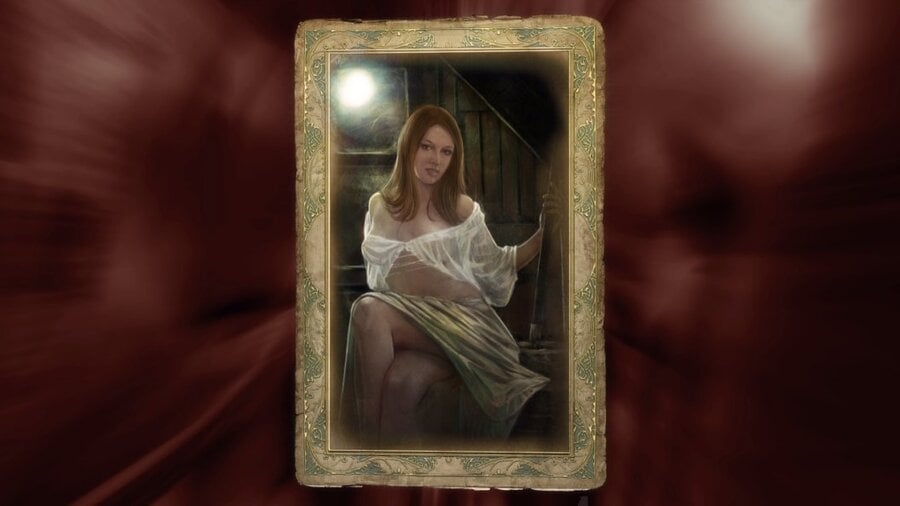
Revisiting CD Projekt Red's 2007 PC game The Witcher today, one of the most awkward components is its collectible romance cards.
These are a collection of cards that you can earn throughout the game for sleeping with different romanceable NPCs and often depict several of its female characters nude or close to it. The cards have become somewhat of a divisive topic among the game's community today, with some seeing them as an example of the way that video games used to relish objectifying women during the 2000s, while others simply view them as a clumsy, albeit harmless attempt, at building upon the existing romance mechanics in the game.
With the original Witcher receiving a new remake, courtesy of the Polish studio Fool's Theory, there's no better time to reflect on this odd piece of the series's history. And in order to do this, we reached out to Karol Kowalczyk, a story designer and scripter on The Witcher 1, who was among those responsible for designing these cards. He was able to shed some light on how the cards ended up in the game and gave us some input on what he would change, given the chance to revisit them today.
Kowalczyk joined the Witcher development team in 2004 after working on a Polish MUD called Arkadia, which was also based on the works of Sapkowski. According to him, the cards were a fairly late addition to the game and they weren't added to be an erotic collectible, but because the team didn't actually have enough resources to create animations for some of the romantic encounters in the game.
The Witcher team had wanted Geralt to be faithful to his counterpart in the novels and this meant giving players the opportunity to lean into his more promiscuous side. Players could therefore complete quests to sleep with a list of NPCs in the game's world, including various humans, dryads, and elves. Barely any of these actually received much more than a single flirtatious line of dialogue, with the card meant to act as an explanation of what had transpired and a memento of this relationship.
As he explains to us, "It's pretty common knowledge [in the industry] that it's very easy for animators to create a scene when a huge portal opens and several dragons rush in and cause destruction around the city. But if you want two characters kissing - oh boy - that can take weeks and still feel cringy or cause laughs instead of creating a romantic atmosphere."
The Witcher team had hoped these cards would be an appropriate stand-in, but since the game’s release, they have been subject to criticism online for their objectification of the game's female characters.
The journalist Aimee Hart reflected on the mechanic in an article for EGM in 2020:
“While The Witcher 3 does some excellent characterization with characters like Triss, Yennefer, and Ciri by allowing them to be fleshed out women instead of “women who are closely linked to Geralt,” the series started off on a particularly bad foot by gamifying sleeping with women by letting Geralt collect “sexcards” of the women he has “conquered.” It’s since become a notorious mechanic and one that thankfully does not make a reappearance in the third game.”
The writer Lauren Morton, meanwhile, was a bit more forgiving in her retrospective for PC Gamer. She did acknowledge that it reduced the female characters to objects, but couldn’t deny the satisfaction she experienced from trying to collect them all:
“For my part, it's hard not to turn these romance cards into a game of ‘gotta catch 'em all.’ They may reduce every woman in the game to a novelty item but as a player I can't deny how, just like every other kind of collectible, I immensely enjoy digging through a wiki to make sure I'm doing each quest properly. I don't want to miss one.”
Speaking to Kowalczyk today, he maintains that the problem with the mechanic stems from the team simply getting carried away with adding them and failing to consider how the player would react to them. As a result, something that he argues began life as a potentially meaningful souvenir of Geralt's relationships in the game became shallow and collectible.
"It is about the fact that you switch to a mindset that you need to collect them all, right?" he tells Time Extension. "And in that context, it is indeed very disturbing that the game kind of forces you to become a mindless sex addict to get some of those. We failed to see that as when you are testing the game for the 100th time, you start to do it mechanically and don't really feel those emotions."
Online there have been a number of conversations among fans about whether the new remake will include these cards, and whether they can be fixed. Some, for example, have jokingly suggested that Geralt should be able to sleep with different sexes or be able to receive male cards as well, but Kowalczyk has another potential solution.
"With the experience I have now, I'd leave the drawings in the game, but remove *any* suggestions that this is a collectible, and also do a review of all the scenes and strip the game of those that were causing mixed feelings."
He believes this would go a long way to changing how people react to this aspect of the game, keeping it much closer to its original intention. It should be noted, however, that Kowalczyk no longers works at CD Projekt, and therefore has no say in whether they will appear in the upcoming remake.
CD Projekt hasn't shied away from the card's controversial status in the past. The Witcher 3: The Wild Hunt - Blood and Wine, for instance, features a tongue-in-cheek reference to the cards activated by talking to a local courtesan. Perhaps Fool's Theory can think of an equally clever way to pay tribute to the original game, without simply repeating the mistakes of the past.







